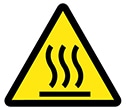Insert Power Supply
Use this procedure to insert the power supply units.

|
1 |
Insert the PSU into the cage on the rear side of the unit in the direction shown (slots 0 or 1) |
|
2 |
The PSU connecting PCB must always face the bottom during insertion |
|
3 |
Direction to insert the power supply |













 Feedback
Feedback